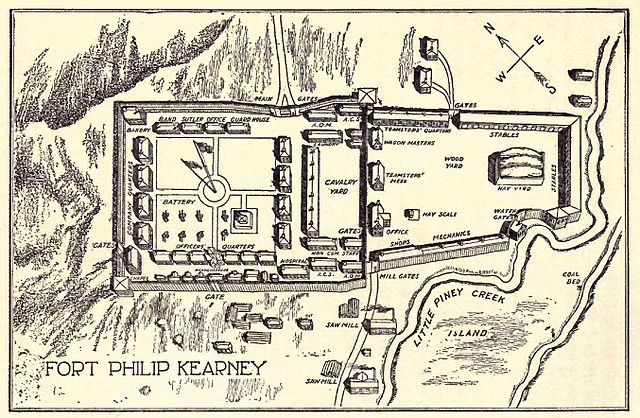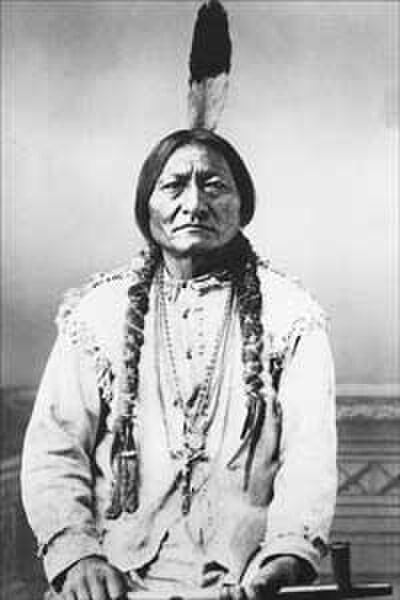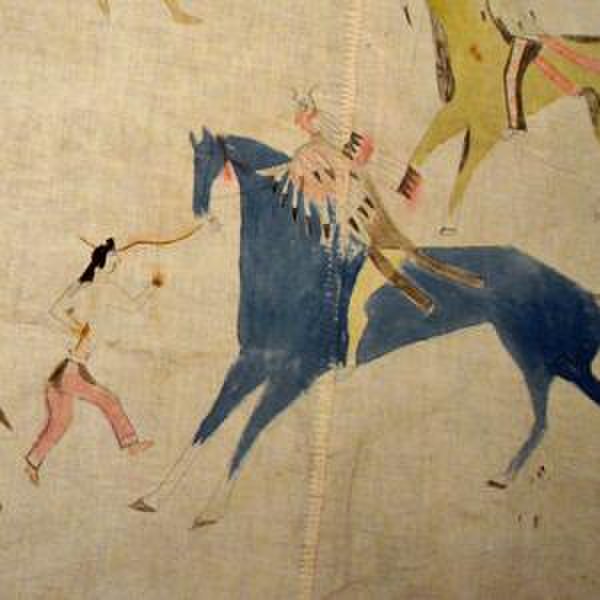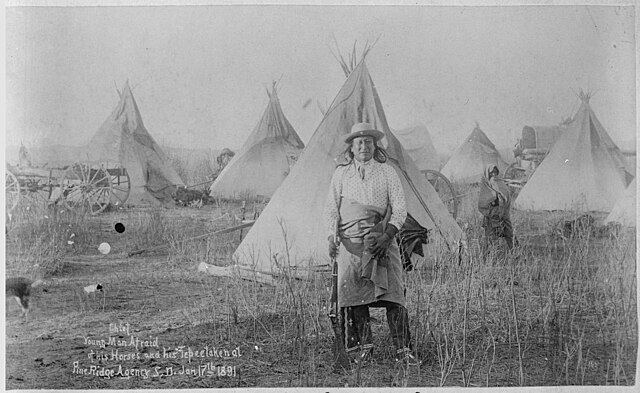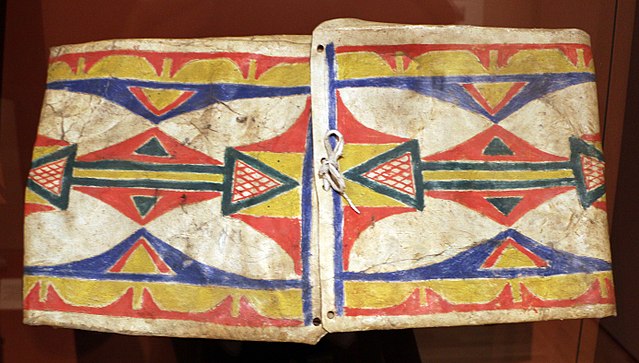Red Cloud's War was an armed conflict between an alliance of the Lakota, Northern Cheyenne, and Northern Arapaho peoples against the United States and the Crow Nation that took place in the Wyoming and Montana territories from 1866 to 1868. The war was fought over control of the western Powder River Country in present north-central Wyoming.
Lakota Sioux chiefs. Red Cloud is seated, second from left. Young Man Afraid of His Horses is standing, second from left. It was hard for the United States to start negotiations with any of these Lakotas, since they did not hold the treaty right to the contested Powder River ground. The Crows did that.
Fort Phil Kearny was constructed to house 1,000 soldiers, a number never achieved in its brief history. Similar to Fort Reno and Fort C. F. Smith it was built in Crow treaty land and accepted by these Indians.
The battle near Fort Philip Kearney, Dakota Territory, December 21, 1866. The battle stood outside the 1851 treaty territory of the Lakotas. These Indian newcomers won the western Powder River hunting grounds for themselves by displacing the local Crows at first. Secondly, they defeated the white soldiers on the very same plains in fights as the one pictured here.
Massacre Hill, looking northeast from Fetterman Monument. The Arapaho and Cheyenne were concealed to the left (west) of the foot trail in this photo; the Lakota to the right (east).
The Lakota are a Native American people. Also known as the Teton Sioux, they are one of the three prominent subcultures of the Sioux people, with the Eastern Dakota (Santee) and Western Dakota (Wičhíyena). Their current lands are in North and South Dakota. They speak Lakȟótiyapi—the Lakota language, the westernmost of three closely related languages that belong to the Siouan language family.
Sitting Bull, a Hunkpapa Lakota chief and holy man, c. 1831 – December 15, 1890
Scenes of battle and horse raiding decorate a muslin Lakota tipi from the late 19th or early 20th century
January 17, 1891: Young Man Afraid of His Horses at camp of Oglala band of Lakota at Pine Ridge, South Dakota, 3 weeks after the Wounded Knee Massacre, when 153 Lakota Sioux and 25 U.S. soldiers died
Lakota parfleche, c. 1890, Speed Art Museum


